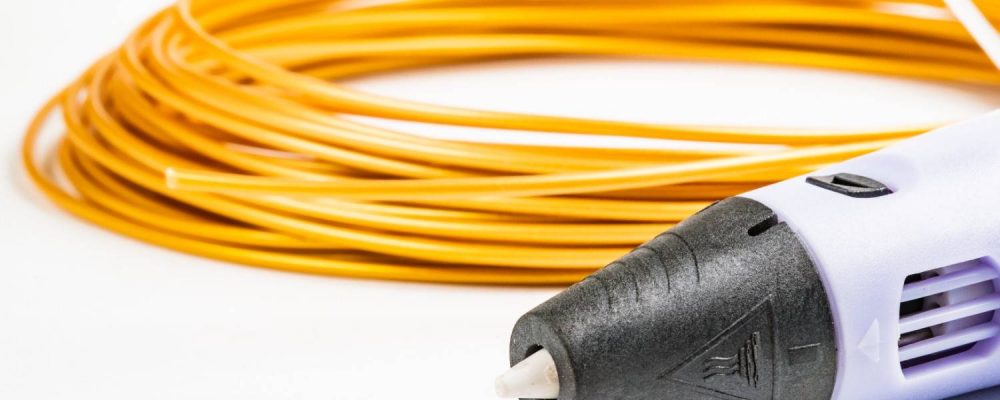Summary : Fiber optic color codes are crucial for efficient, accurate, and reliable network installations. This guide explains how standardized fiber strands, cable jackets, connectors, and MPO systems simplify identification, prevent mismatches, and maintain signal integrity. Following industry standards like TIA/EIA-598 ensures consistent, scalable, and high-performance networks while reducing downtime and troubleshooting errors. Technicians and businesses benefit from faster installations, organized cable management, and long-term reliability, making fiber optic color codes essential for modern data centers and enterprise networks.

Fiber optic technology has transformed the way we send data. Fiber optics is at the core of communications today, from lightning-speed internet connectivity to secured corporate networks. As opposed to older copper cables that work on electricity signals, fiber optics uses light pulses to transport data over huge spans with minimal attenuation. It is thus the choice among companies, data centers, and telecommunications facilities.
Yet, when hundreds or thousands of unique fibers travel through a single network, efficiently handling them becomes difficult. Following one strand amidst hundreds in a near, packed cable would be almost impossible without a substantial identification method. This is where fiber optic color-coding plays an important role.
Color codes are a universal language for network technicians. They enable rapid identification of fiber types, make installations easier, and avoid costly connection mistakes. Without usual markings, fiber network work would be cluttered and error-ridden.
This tutorial deconstructs fiber optic color coding, describing its significance, composition, industry norms, and practical applications. Whether you’re a professional installer, network engineer, or simply a person interested in fiber optics, understanding these color codes is vital to ensuring stable connectivity.
Fiber optic color coding may look insignificant, but it’s the distinction between efficiency and disaster in mass installations. Here’s why it’s important:
If you’ve ever had to resolve a network problem in a data center, you know the agony of messy cables. Color codes eliminate uncertainty, enabling technicians to work more quickly and accurately.
To ensure order in fiber optic installations, the TIA/EIA-598 standard was developed. This system allows a specific color to each fiber in a 12-fiber series, making it easy to remember.
Below is the official color sequence used in single-mode and multimode fiber bundles:
Where fiber counts pass 12, the cycle begins over, normally with an added stripe or coloration to identify groups. Through this process, technicians can identify individual fibers, even cables made of hundreds of strands.
Color coding is essential for use with ribbon fiber cables, which involve several fibers fused into flat strips. Without color coding, running large-scale splicing operations would be daunting.
Aside from the inner fibers, the exterior jacket of a fiber optic cable supplies essential details on what’s within. This color coding allows technicians to identify fiber types and use them immediately.
Following are the most widespread cable jacket colors and what they represent:
This set of colors avoids ambiguity when using or replacing cable fiber. An example is that if a technician has a yellow jacket, they already know they have a single-mode fiber, assuring compatibility with what already exists.
Fiber optic connectors also follow a standardized color scheme. This makes differentiating between polish types and fiber categories easier, preventing misconnections.
The rubber boot on fiber connectors can also be color-coded. These strain-relief boots prevent cable bending and kinking while adding another level of identification.
For example, color-coded boots can speed up maintenance and prevent dispatching if you work in a high-density patch panel.

In fiber networks, splice trays and closures protect and manage fiber splices. Maintaining the right color sequence ensures each fiber aligns appropriately, reducing the risk of signal loss.
Some key principles when working with splice trays:
In cases where fibers are organized in ribbon cables, color-coded sequences allow technicians to splice numerous fibers at once, dramatically decreasing installation time.
Managing polarity in fiber optics is required, especially in MPO/MTP systems used in data centers. If fibers are connected in the wrong order, data communication fails.
MPO connectors use color coding to indicate contradiction and fiber type:
High-density networks can avoid signal mismatches and ensure flawless connectivity following color conventions.
Color coding in fiber optics is not arbitrary. It adheres to strict industry standards to maintain consistency, compatibility, and effortless integration across networks globally. These standards govern everything from the color of fiber strands to cable jackets and connector boot colors so that various manufacturers and installers speak the same language when they work on fiber networks.
Another fundamental standard is TIA/EIA-598, mandated by the Telecommunications Industry Association (TIA). The standard specifies the 12-color fiber order so that technicians can identify, splice, and analyze fiber cables more easily. Using TIA/EIA-598 guarantees error-free installations and avoids expensive errors with single-mode, multimode, or ribbon fiber cables.
Imagine a scenario where different fiber providers use their color-coding systems. An installation technician must decode each manufacturer’s scheme, leading to delays, confusion, and potential mismatches. This is why standardization is crucial. It ensures that:
Beyond TIA/EIA-598, other global standards also influence fiber optic color coding:
By following these guidelines, network engineers can ensure that fiber infrastructures are built perfectly the first time, reducing operational risks and ensuring long-term reliability.
Even with clear industry standards, fiber optic installations aren’t always smooth. Mistakes happen—sometimes due to oversight, others due to rushing through an installation. Unfortunately, even a small error in fiber optic networks can lead to signal degradation, high latency, or complete communication failure.
Here are some of the most frequent mistakes technicians encounter when dealing with fiber optic color codes—and how to avoid them.
Ignoring color codes when splicing leads to incorrect connections – Each fiber strand follows a specific sequence; failing to stick to it can cause severe disruptions. When splicing, especially in high-fiber-count cables, one misplaced fiber can throw off an entire network.
How to Avoid This Mistake:
Overlooking polarity management, resulting in transmission failures – Fiber networks depend on correct polarity—one fiber transmits while the other receives. Signals won’t reach their intended destination if the polarity is reversed, leading to connection failures and performance issues.
Color coding fiber optics is not an amenity. It’s a necessity. It speeds up installations, limits mistakes, and keeps networks running. Whether working with fiber strands, cable jackets, connectors, or MPO systems, adhering to color codes ensures reliability and efficiency.
Knowing these standards makes fiber work easier, safer, and more effective. Whether planning a data center, debugging a network, or installing a new fiber connection, adhering to color codes will always be worth it.
Network Drops specializes in professional fiber optic installations, structured cabling solutions, and network upgrades for businesses of all sizes. Our experienced team ensures that your fiber infrastructure is built for maximum performance, reliability, and long-term efficiency.
Contact Network Drops today to discuss your fiber optic needs! Let us help you create a high-speed, future-proof network with precision and expertise.
After all, when it comes to networking, accuracy is paramount.
Color codes ensure quick identification, correct fiber alignment, and error prevention during installation, splicing, and maintenance. They help standardize connections across different manufacturers and reduce misconnection risks.
The TIA/EIA-598 standard follows this 12-color sequence:
For cables with more than 12 fibers, the sequence repeats with a tracer or stripe.
Connector colors indicate fiber type and polish style:
This helps prevent misconnections and signal loss.
Ignoring color codes can cause signal loss, polarity issues, and mismatched fiber types, leading to network failures and costly troubleshooting.
The TIA/EIA-598 standard sets the color coding guidelines for fiber optic cables and connectors, ensuring installation consistency.
"*" indicates required fields
Scott Fcasni is the driving force behind Shock I.T. Support’s commercial datacomm cabling division, delivering expert solutions that power reliable, high-performance network infrastructures. With extensive experience in structured cabling and a commitment to precision, Scott ensures that every project—whether for small businesses or large enterprises—meets the highest standards of quality and scalability.